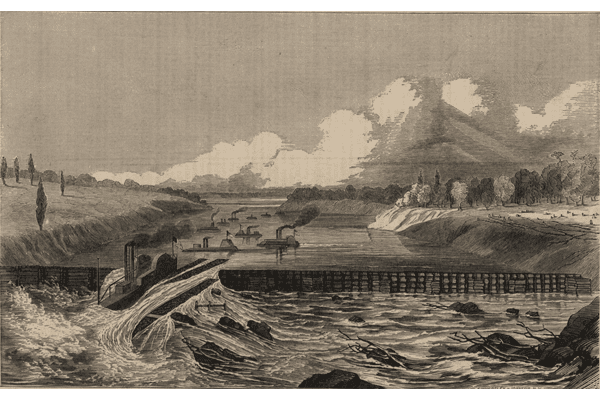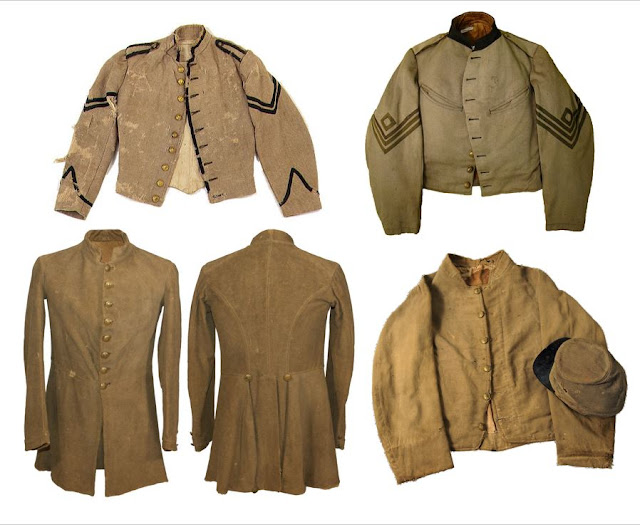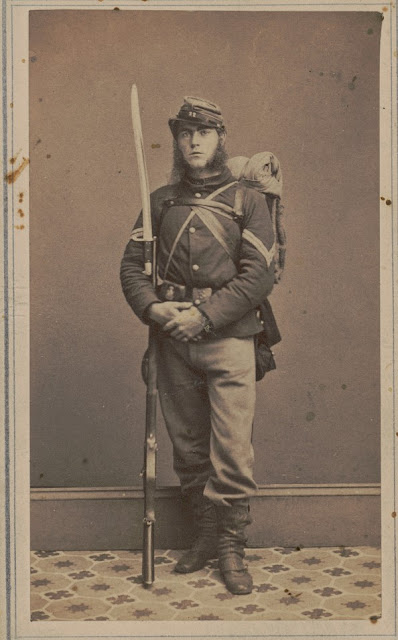Crashed Over the Dam as the Bands Played On: Escaping Red River Aboard the Mound City
By the time the gunboat U.S.S. Mound City made it down the Red River in May 1864, the ironclad had to dump much of its armor and 13 guns to get through the low waters. Reading the following letters from Engineer John Harnett, his determination and simple faith in success come through strongly, as well as a sense of the surreal.
A prime example is his description of how the Mound City got over the falls of the river at Bailey's Dam. "The fall was eight feet; the break just large enough for the boats to pass through," he said. "As ours was the first boat over the falls, we were the first ordered over the dam. We went out into the stream and got a good start and headed all right, put 150 lbs of steam to her, and down she went, burying herself completely and striking the rocky bottom with such great violence that she immediately stopped. Our rudder unshipped and the water roared over us in a perfect torrent. Had we not taken the precaution to close and batten all our ports and hatches, we would have been filled with water."
"After surging a minute or two, the current carried us down all right but we are strained very badly. It was a tremendous undertaking, however, we all got over safe except the Eastport. We also lost 13 guns which are exploded and our iron plating. I feel very sorry to lose the iron but I think we will be able to stand a good fight yet. I should mention that the dam was built of coal barges and log cribs filled and sunk with brick. Brass bands were playing on each side of the river as we passed over and tens of thousands of soldiers gave us cheer after cheer as we made the plunge," he wrote.
The Waukegan Weekly Gazette presented Engineer Harnett's letters thus: “We have been furnished the following letters from Mr. John M. Hartnett, U.S.N., written to his wife during and succeeding the period when Admiral Porter’s naval fleet was detained upon the Red River by low water,” the editor of the Waukegan Weekly Gazette stated in the introduction to this article. “Some of the letters bear rather remote dates, still they are very interesting, giving a clear account of the trials of our army and navy during that memorable period and although somewhat old, will repay a perusal.”
“The Banks expedition will go down to posterity as one of the dark spots in the history of this war,” the Gazette continued. “The following letters, with those already published in these columns from Mr. Harnett, will convey to the reader a pretty correct idea as to the part taken in this expedition by the navy under Admiral Porter.” These letters first appeared on the front page of the June 11, 1864, edition of the Waukegan Weekly Gazette.
U.S.S.
Mound City, above
the falls, on the Red River near Alexandria, Louisiana
April 28, 1864
A fight is now going on only a few
miles to the west of us. Musketry can be heard very plainly. Word came to us
that the Rebels were advancing with 150 pieces of artillery on one side and 30
pieces on the other side of the river. We cannot get below the falls, there not
being enough water to float any of the ten boats lying here together, almost
helpless. We cannot move up or down. We are all anchored in the middle of the
river in line of battle awaiting events which will soon come. One thing is certain
that this fleet will not be given up without being blown up first. I suppose the
enemy will cut off our supplies below is by planting batteries on the riverbank
so as to stop all boats from coming up. Everything looks dubious but I hope for
the best.
We have already lost five boats above
here. The Eastport, one of our best boats, was snagged. Two steamboats
with steam pumps went up to pump her out and raise her which they succeeded in doing
but had got but a short distance down the river when she struck a bar and could
not be got off. The Rebels, taking advantage of her helpless position, kept a
constant fire on her and the two steamboats above mentioned that pumped her
out, the Champion No. 3 and No. 5. Those two boats were kept for
that purpose only and were very valuable in that capacity. The Eastport
we had to blow up. The enemy boarded the two Champions and took with
some of our officers and men on board a large lot of Negroes. Many of them
threw themselves into the river and were drowned while most of those on board
were slaughtered.
The other two boats, which were transports, were burned. The boat the admiral was on (the Cricket) received 27 shots and had six men killed. The Rebels had captured 17 guns from Banks, amongst which was the Chicago Mercantile Battery and Nim’s Battery from Massachusetts and our own ammunition. They whipped Banks and drove him from Pleasant Hill to Grand Ecore and from there to this place. Flushed with their success, they think that we are penned in here and will become an easy prey for them, but you can rely on it: the Red River waters will become redder than they are now before these boats change hands. Banks, Hunter, and McClernand are here. What force we have I cannot tell. About 4,000 under McClernand arrived yesterday; some more are expected from Texas and perhaps the 37th Illinois will be with them.
 |
| Engineer Hartnett reported that Confederates harassed the stranded gunboats "in a thousand different ways such as fire rafts, torpedoes, night attacks, etc." |
May 1, 1864
The fight did not amount to much the
other day, still it give Banks an awful scare, so much so that he formed three
lines of battle two miles back of here. Skirmishing continued all day. The Rebs
in the meantime were flanking him, showing a bold front to cover their real
object.
General A.J. Smith has crossed to the east side of the river
to capture some of the enemy who have gone down the river to blockade it, cut
off our supplies, and capture transports. He is a fighting man and he has the
confidence of all fighting men. He does not furnish the enemy with supplies but
gets his supplies from the country he is in; nor does he deal in cotton. His
troops actually love him and would go through fire and water with him. He has
done all the successful fighting and captured all the prisoners and guns that
have been captured in this expedition.
Banks now wants to leave and take his army with him. The
admiral in conversation with him the other day told Banks that he was ordered
up here with his fleet to give him all the protection he wanted on the water.
He had done so and now the river had become so low that the fleet could not get
over the falls and were in a measure helpless as our supplies would not last
long. If our supplies were cut off, ammunition expended, constantly harassed by
Rebels in a thousand different ways such as fire rafts, torpedoes, night
attacks, etc. Protected as they are by the high banks and the levee, the last
resort would come and that is to blow up our vessels and every man for himself.
Banks has given up command of the army to General McClernand of Illinois who is to stay here until the fleet can get out. Yesterday, Colonel Bailey commenced to dam the river below the falls so as to raise the water sufficient to carry us over. It is through it will be complete in ten days. I hope it may.
 |
| Bailey's Dam on the Red River |
40 miles
below Alexandria, Louisiana
May 14, 1864
We finally succeeded in getting over
the falls on the 12th. The army and the navy together built a dam
across the river below the falls to raise the water on the falls about three
feet. We succeeded in completing the dam but the current became so rapid that a
part of it was carried away before we could get any of the heavy boats such as
ours over. Then we had to go to work night and day and build two wing dams
directly on the falls that only partially succeeded after trial. We had orders
to take some of our guns and iron plating off for the purpose of lightening the
boats as much as possible. After bursting all the guns we took off, we got over
and down the dam that night.
The next thing was to jump the dam.
The fall was eight feet; the break just large enough for the boats to pass
through. As ours was the first boat over the falls, we were the first ordered
over the dam. We went out into the stream and got a good start and headed all
right, put 150 lbs of steam to her, and down she went, burying herself completely
and striking the rocky bottom with such great violence that she immediately
stopped. Our rudder unshipped and the water roared over us in a perfect
torrent. Had we not taken the precaution to close and batten all our ports and
hatches, we would have been filled with water.
After surging a minute or two, the
current carried us down all right but we are strained very badly. It was a tremendous
undertaking, however, we all got over safe except the Eastport. We also
lost 13 guns which are exploded and our iron plating. I feel very sorry to lose
the iron but I think we will be able to stand a good fight yet. I should
mention that the dam was built of coal barges and log cribs filled and sunk
with brick. Brass bands were playing on each side of the river as we passed over
and tens of thousands of soldiers gave us cheer after cheer as we made the
plunge.
We remained at Alexandria only long
enough to take in coal and ammunition; the army and the fleet all left about
the same time. It would have been impossible for either one to get away alone.
The soldiers are marching along the bank and the gunboats with 40 transports
under their protection are proceeding slowly and consciously in perfect order
so far apart that each boat protects so many transports.
Tonight, we are down to where the Rebels captured two of our
small tinclads like the old Glide and the transport John Warner. All
of them were sunk in the river just below for the purpose of blocking the river
and prevent our getting out. They were sure they had us above the falls and I
think they will fail here. It is reported that the Rebels are going to make a
stand three miles below here; they have 27 pieces of artillery and 16,000 men.
We will blow up the obstructions in the river tomorrow morning if we cannot
force ourselves over without. This afternoon we had a little fight with the
bushwhackers. They had fired on one of our transports, killing two or three
men. One was killed and one wounded aboard the monitor Ozark.
The army has been skirmishing all day, the enemy falling back
to this point. The admiral is with us but he is unwell. I believe he is not as energetic
as I have seen him and seems to be low-spirited. This is a great blow to us
all; still if we get to the Mississippi with this fleet and army, the retreat
will be a masterly success.
I am afraid the Rebels will cross the river tonight and get their batteries on the opposite side of the river from the army and we will have to do all the fighting alone tomorrow. If that is the case, we will have hot work on hand. We have to drink this infernal river water with human bodies, both black and white, floating in it, also dead horses, mules, and alligators. The thought alone is horrid enough. I hope we will soon get out of this scrape. The Rebels say they are going to sink and bag the whole of us. They may sink the boats and kill us but the bagging part is played out. We will blow our boats up with all on board first.
40 miles
from the Mississippi River
Midnight,
May 16, 1864
We have been fighting most of the day and have cleared our way together with the transports. Our boat and two other gunboats are ahead; 8 gunboats and 36 transports are behind. All the fleet is now safe as we are only 40 miles from the Mississippi. We will not go out to the Mississippi for two or three days. We are to convey some troops to Simsport about 60 miles from here. I don’t know our destination. We must go somewhere for repairs soon. I finish this with haste, hoping to be able to get in the admiral’s boat which is nearby in the morning. He is going out of the river immediately. There was no one killed in our boat and we fired 291 shots.
At Simsport, Louisiana
May 19, 1864
We are here to cover Banks’ retreat across this river on his way to New Orleans. They are now building a pontoon bridge of steamboats, 20 in number, lying side by side across the stream- a novel sight, indeed. Go into Wheelers’ once in awhile and look at Harper’s and Frank Leslie’s pictorial papers for some good Red River scenes. General A.J. Smith was fighting all day about six miles from here; he is bringing up the rear of Banks’ army. It is supposed that the Rebels will follow to this river and attack the transports. There are some 30 of them here and three gunboats to protect them. When we leave here it is uncertain where we will go. Two of the ironclads, Louisville and Pittsburgh, have been ordered to Cairo for repairs. We are in worse condition than either of them. We will certainly go to Cairo or New Orleans for repairs; if we do, I probably will get a chance to go home. It is likely all the officers will.
To read more about the Mound City, please check out "Steaming Through a Hornet's Nest: The Mound City at Vicksburg."
Source:
Letters from
Engineer John M. Hartnett, U.S.S. Mound City, Waukegan Weekly Gazette
(Illinois), June 11, 1864, pg. 1












Comments
Post a Comment